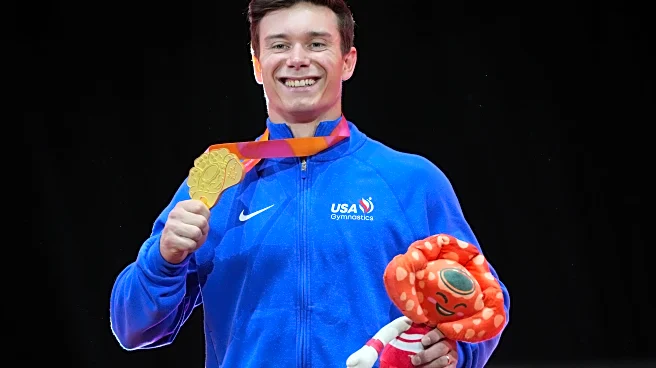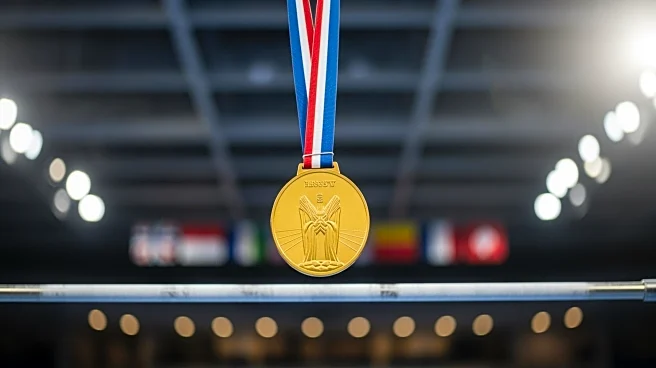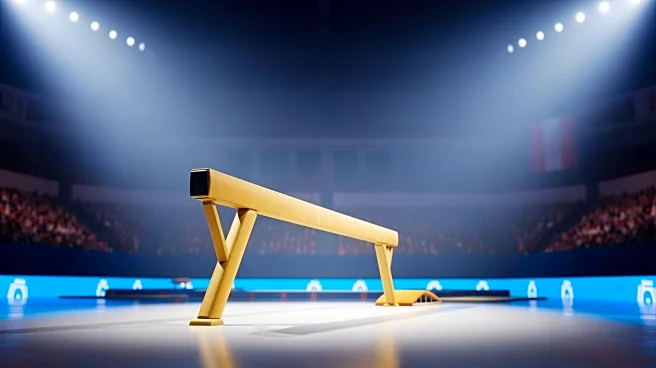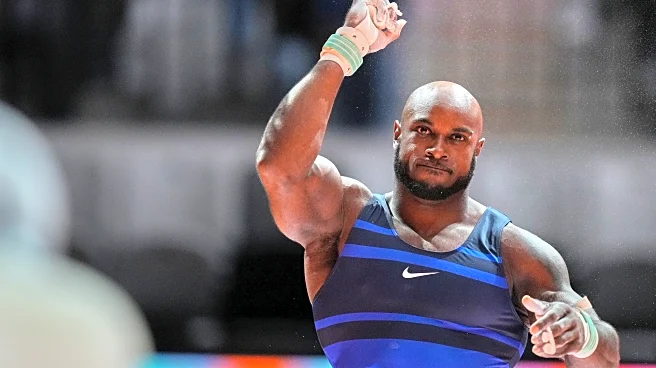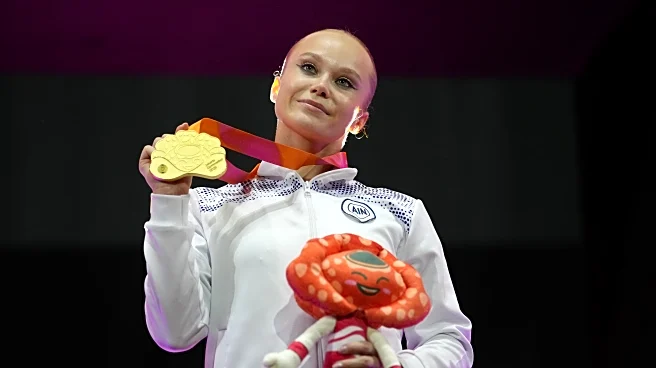What's Happening?
The U.S. women's gymnastics team secured only two medals at the World Championships held in Jakarta, marking the lowest medal count for the team since 2001. Leanne Wong earned a silver in the all-around
category, while Joscelyn Roberson took bronze on vault. This performance placed the U.S. behind China and neutral athletes representing Russia, both of whom won three medals each. Chellsie Memmel, the U.S. program lead, acknowledged the team's underperformance, noting the need for improvement and a reset in training. The absence of key athletes like Simone Biles, Suni Lee, Jade Carey, and Jordan Chiles was a significant factor in the team's reduced success.
Why It's Important?
The U.S. women's gymnastics team has historically dominated international competitions, making this year's results a notable deviation from their usual performance. The low medal count raises concerns about the team's preparedness and potential challenges as they approach the 2028 Los Angeles Olympics. The absence of top athletes highlights the importance of developing depth within the team to maintain competitive standards. This situation could prompt a reassessment of training strategies and athlete development programs to ensure future success on the world stage.
What's Next?
The U.S. gymnastics team is expected to undergo a period of reflection and training adjustments to address the shortcomings experienced at the World Championships. Chellsie Memmel emphasized the need for athletes to regain confidence and focus on improving their performance. As the team prepares for upcoming competitions, including the 2028 Olympics, efforts will likely be made to strengthen the roster and enhance skill execution. The team's response to this setback will be crucial in determining their future trajectory in international gymnastics.
Beyond the Headlines
This development may have broader implications for the U.S. gymnastics program, including potential shifts in coaching strategies and athlete recruitment. The focus on mental resilience and confidence-building could become central themes in training regimens. Additionally, the performance gap may influence funding and support for gymnastics at both national and grassroots levels, as stakeholders seek to ensure the U.S. remains competitive globally.



